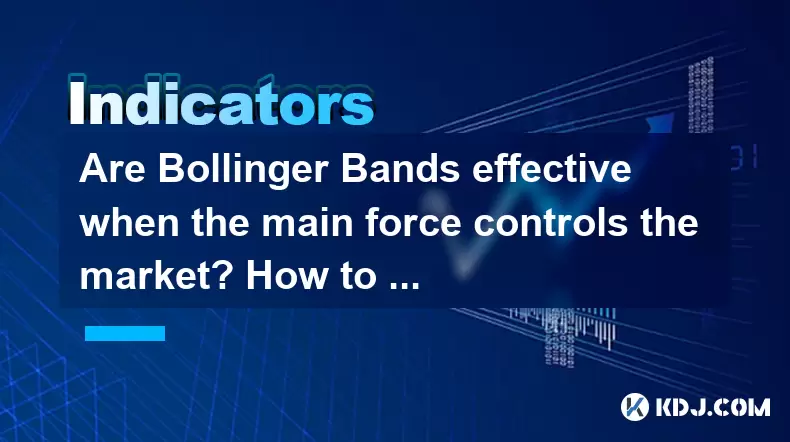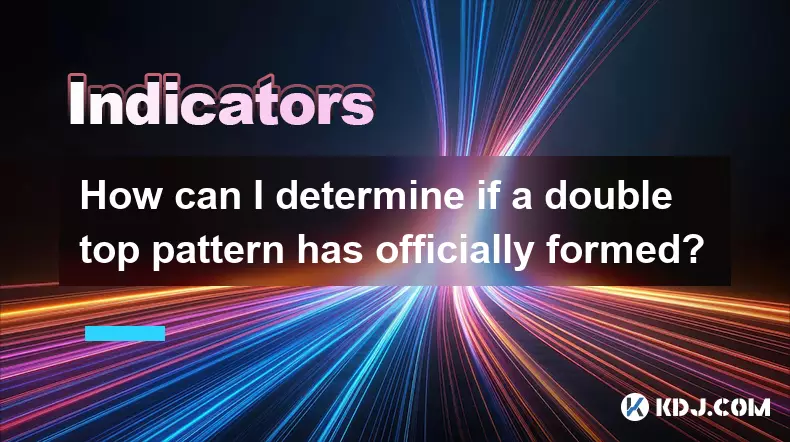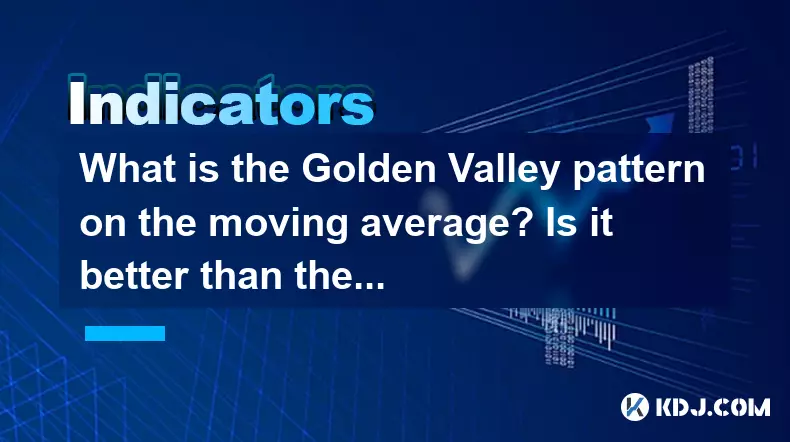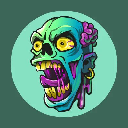-
 bitcoin
bitcoin $122025.899241 USD
-2.12% -
 ethereum
ethereum $4488.068729 USD
-4.11% -
 bnb
bnb $1315.348019 USD
8.65% -
 tether
tether $1.000457 USD
0.03% -
 xrp
xrp $2.875326 USD
-3.69% -
 solana
solana $222.043604 USD
-4.07% -
 usd-coin
usd-coin $0.999682 USD
0.00% -
 dogecoin
dogecoin $0.249887 USD
-5.62% -
 tron
tron $0.337379 USD
-2.59% -
 cardano
cardano $0.827763 USD
-5.06% -
 hyperliquid
hyperliquid $45.774531 USD
-2.43% -
 chainlink
chainlink $22.079309 USD
-5.87% -
 ethena-usde
ethena-usde $1.000156 USD
0.02% -
 sui
sui $3.482566 USD
-3.57% -
 stellar
stellar $0.386982 USD
-4.92%
Are Bollinger Bands effective when the main force controls the market? How to identify fake lines?
Bollinger Bands can be less effective in markets controlled by whales, who may create fake lines; traders should use volume analysis and other indicators to confirm signals.
May 22, 2025 at 01:08 am

Bollinger Bands are a popular technical analysis tool used by traders to gauge market volatility and potential price movements. When the market is controlled by the main force, such as large institutional investors or whales, the effectiveness of Bollinger Bands can be questioned. This article delves into the effectiveness of Bollinger Bands under such conditions and provides guidance on identifying fake lines within the cryptocurrency market.
Understanding Bollinger Bands
Bollinger Bands consist of a middle band, which is a simple moving average (SMA), and two outer bands that are standard deviations away from the middle band. The standard setting for Bollinger Bands is a 20-day SMA with the outer bands set at two standard deviations. These bands expand and contract based on market volatility, providing traders with a visual representation of the market's current state.
In a normal market, Bollinger Bands can be highly effective for identifying potential entry and exit points. When prices touch or cross the upper band, it often indicates that the asset is overbought, suggesting a potential sell signal. Conversely, when prices touch or cross the lower band, it may indicate that the asset is oversold, suggesting a potential buy signal.
Bollinger Bands in a Market Controlled by the Main Force
When the market is dominated by the main force, such as large institutional investors or whales, the dynamics can shift significantly. These entities have the power to manipulate prices and create false signals that can mislead traders relying solely on technical analysis tools like Bollinger Bands.
In such scenarios, Bollinger Bands may still provide some value, but traders need to be cautious. The main force can push prices beyond the outer bands, creating false breakouts that could lead to premature trading decisions. For instance, if whales deliberately drive the price above the upper band to trigger sell orders, and then buy back at lower prices, traders who acted on the sell signal might incur losses.
Identifying Fake Lines in Bollinger Bands
Fake lines refer to misleading signals generated by Bollinger Bands, often caused by the main force's manipulation of the market. Identifying these fake lines requires a combination of technical analysis and an understanding of market psychology. Here are some strategies to help you identify fake lines:
Volume Analysis: Pay close attention to trading volume when prices touch or cross the outer bands. A significant increase in volume can indicate genuine market interest, while low volume might suggest a fake move orchestrated by the main force.
Confirmation with Other Indicators: Do not rely solely on Bollinger Bands. Use other technical indicators like the Relative Strength Index (RSI) or Moving Average Convergence Divergence (MACD) to confirm the signals provided by Bollinger Bands. If multiple indicators align, the signal is more likely to be genuine.
Price Action: Observe the price action following a breakout. If the price quickly reverses and moves back within the bands, it could be a sign of a fake line. Genuine breakouts tend to sustain their momentum for a longer period.
Time Frame Analysis: Analyze Bollinger Bands across different time frames. A breakout that appears on a shorter time frame but is not confirmed on a longer time frame might be a fake line.
Practical Example of Identifying Fake Lines
Let's consider a practical example to illustrate how to identify fake lines using Bollinger Bands in the cryptocurrency market. Suppose you are analyzing the price chart of Bitcoin (BTC) and notice that the price has crossed the upper Bollinger Band on a 1-hour chart.
Check the Volume: If the volume during the breakout is unusually low, it might indicate a fake line created by the main force.
Confirm with RSI: Check the RSI to see if it is also indicating overbought conditions. If the RSI does not confirm the overbought signal from the Bollinger Bands, it might be a fake line.
Observe Price Action: Monitor the price movement after the breakout. If the price quickly reverses and falls back within the bands, it is likely a fake line.
Compare Time Frames: Look at the same breakout on a 4-hour or daily chart. If the breakout is not visible on these longer time frames, it is more likely to be a fake line.
Using Bollinger Bands with Caution
While Bollinger Bands can be a valuable tool in your trading arsenal, it is crucial to use them with caution, especially in a market controlled by the main force. Here are some additional tips to enhance your use of Bollinger Bands:
Combine with Fundamental Analysis: In addition to technical analysis, consider the fundamental factors affecting the cryptocurrency market. News, regulatory changes, and macroeconomic trends can influence price movements and help you differentiate genuine signals from fake lines.
Risk Management: Always implement robust risk management strategies. Set stop-loss orders to limit potential losses from fake lines. Do not risk more than you can afford to lose on any single trade.
Backtesting: Before applying Bollinger Bands in live trading, backtest your strategies using historical data. This can help you understand how effective Bollinger Bands are in different market conditions and identify patterns of fake lines.
Stay Informed: Keep an eye on market news and sentiment. The main force often uses news and social media to manipulate market sentiment. Being informed can help you anticipate potential fake lines.
Frequently Asked Questions
Q: Can Bollinger Bands be used effectively in all market conditions?A: Bollinger Bands can be effective in various market conditions, but their reliability can vary. In highly volatile markets or markets controlled by the main force, traders should use Bollinger Bands in conjunction with other indicators and analysis methods to increase their effectiveness.
Q: How often do fake lines occur in the cryptocurrency market?A: The frequency of fake lines can vary depending on market conditions and the presence of the main force. In markets with high manipulation by whales or institutional investors, fake lines may occur more frequently. Traders should always be vigilant and use multiple analysis methods to confirm signals.
Q: Are there any specific cryptocurrencies where Bollinger Bands work better?A: Bollinger Bands can be applied to any cryptocurrency, but their effectiveness may vary. Generally, more liquid and widely traded cryptocurrencies like Bitcoin and Ethereum may provide more reliable signals due to higher trading volumes and less susceptibility to manipulation by the main force.
Q: How can I improve my skills in identifying fake lines with Bollinger Bands?A: Improving your skills in identifying fake lines requires practice and continuous learning. Regularly backtest your strategies, stay updated with market news, and engage with trading communities to learn from other traders' experiences. Additionally, combining Bollinger Bands with other technical indicators and fundamental analysis can enhance your ability to spot fake lines.
Disclaimer:info@kdj.com
The information provided is not trading advice. kdj.com does not assume any responsibility for any investments made based on the information provided in this article. Cryptocurrencies are highly volatile and it is highly recommended that you invest with caution after thorough research!
If you believe that the content used on this website infringes your copyright, please contact us immediately (info@kdj.com) and we will delete it promptly.
- BlockDAG, DOGE, HYPE Sponsorship: Crypto Trends Shaping 2025
- 2025-10-01 00:25:13
- Deutsche Börse and Circle: A StableCoin Adoption Powerhouse in Europe
- 2025-10-01 00:25:13
- BlockDAG's Presale Buzz: Is It the Crypto to Watch in October 2025?
- 2025-10-01 00:30:13
- Bitcoin, Crypto, and IQ: When Genius Meets Digital Gold?
- 2025-10-01 00:30:13
- Stablecoins, American Innovation, and Wallet Tokens: The Next Frontier
- 2025-10-01 00:35:12
- NBU, Coins, and Crypto in Ukraine: A New Yorker's Take
- 2025-10-01 00:45:14
Related knowledge

What is a tower bottom candlestick pattern? Does it have a high success rate?
Sep 22,2025 at 07:18am
Tower Bottom Candlestick Pattern Explained1. The tower bottom candlestick pattern is a reversal formation that typically appears at the end of a downt...

What is a black hole pattern in the MACD indicator? Is it a cause for concern?
Sep 21,2025 at 06:54pm
Bitcoin's Role in Decentralized Finance1. Bitcoin remains the cornerstone of decentralized finance, serving as a benchmark for value and security acro...

How can I use the psychological line (PSY) to determine market sentiment?
Sep 17,2025 at 02:19pm
Understanding the Psychological Line (PSY) in Cryptocurrency TradingThe Psychological Line, commonly referred to as PSY, is a momentum oscillator used...

How can I determine if a double top pattern has officially formed?
Sep 21,2025 at 03:18am
Understanding the Structure of a Double Top Pattern1. A double top pattern consists of two distinct peaks that reach approximately the same price leve...

What is the Golden Valley pattern on the moving average? Is it better than the Silver Valley pattern?
Sep 21,2025 at 02:54pm
Understanding the Golden Valley Pattern in Moving Averages1. The Golden Valley pattern is a technical formation observed in cryptocurrency price chart...

What does a death cross of the RSI in the strong zone (above 50) mean?
Sep 17,2025 at 10:54pm
Understanding the Death Cross in RSI Context1. The term 'death cross' is traditionally associated with moving averages, where a short-term average cro...

What is a tower bottom candlestick pattern? Does it have a high success rate?
Sep 22,2025 at 07:18am
Tower Bottom Candlestick Pattern Explained1. The tower bottom candlestick pattern is a reversal formation that typically appears at the end of a downt...

What is a black hole pattern in the MACD indicator? Is it a cause for concern?
Sep 21,2025 at 06:54pm
Bitcoin's Role in Decentralized Finance1. Bitcoin remains the cornerstone of decentralized finance, serving as a benchmark for value and security acro...

How can I use the psychological line (PSY) to determine market sentiment?
Sep 17,2025 at 02:19pm
Understanding the Psychological Line (PSY) in Cryptocurrency TradingThe Psychological Line, commonly referred to as PSY, is a momentum oscillator used...

How can I determine if a double top pattern has officially formed?
Sep 21,2025 at 03:18am
Understanding the Structure of a Double Top Pattern1. A double top pattern consists of two distinct peaks that reach approximately the same price leve...

What is the Golden Valley pattern on the moving average? Is it better than the Silver Valley pattern?
Sep 21,2025 at 02:54pm
Understanding the Golden Valley Pattern in Moving Averages1. The Golden Valley pattern is a technical formation observed in cryptocurrency price chart...

What does a death cross of the RSI in the strong zone (above 50) mean?
Sep 17,2025 at 10:54pm
Understanding the Death Cross in RSI Context1. The term 'death cross' is traditionally associated with moving averages, where a short-term average cro...
See all articles










































































